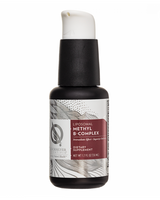Description
Organic Acids Metabolic Profile
Levels of organic acids can indicate insufficient cofactor micronutrients for critical enzymes that are needed in metabolic pathways. Use this test to detect issues with neurotransmitter levels, nutrient deficiencies, antioxidant deficiencies, yeast and clostridia overgrowth and essential fatty acid metabolism. Great complement to the Digestive Assessment and Solutions panels! Comes with complete guide to interpret all metabolites from the test.
There are 5 libraries included in this series:
Organic Acid Test 1 Yeast and Fungal Markers
Organic Acid Test 2 Bacterial Metabolites
Organic Acid Test 3 Oxalate Metabolites
Organic Acid Test 4 Glycolytic Cycle Metabolites
Organic Acid Test 5 Mitochondrial Markers
The Organic Acids Test is a clinical laboratory test used by naturopathic doctors in their practice. The purpose is to gain a greater understanding about the patient in areas of gut yeast and bacteria but also about neurotransmitters, nutritional market, glutathione status, oxalate metabolism and more. We are using these energetically to infer similar information from the energy field and then to run the frequencies. The OAT assists in evaluating:
• Krebs cycle abnormalities • Neurotransmitter levels
• Nutritional deficiencies
• Antioxidant deficiencies
• Yeast and Clostridia overgrowth • Fatty acid metabolism
• Oxalate levels.
|
Oxalate Markers |
Meaning of metabolite |
|
Citramalic acid |
• Elevated citramalic acid is produced mainly by Saccharomyces species or Propionbacteria overgrowth. High potency, multi-strain probiotics may help rebalance GI flora. |
|
5-Hydroxy-methyl-furoic acid |
• A metabolite produced by Aspergillus and possibly other fungal species in the GI tract. Natural antimicrobials may be helpful in this case. |
|
3-Oxoglutaric acid |
• Indicates a possible yeast overgrowth in the GI tract. High- potency, multi-strain probiotics may help rebalance GI flora. |
|
Furan-2,5-dicarboxylic acid |
• A metabolite produced by Aspergillus and possibly other fungal species in the GI tract. Natural antimicrobials may be helpful in this case. |
|
Furancarbonylglycine |
• A metabolite produced by Aspergillus and possibly other fungal species in the GI tract. Natural antimicrobials may be helpful in this case. |
|
Tartaric acid |
• Produced by action of Candida hyaluronidase on the intercellular cement, hyaluronic acid. Oxidation of the hyaluronic acid breakdown by white blood cell hypochlorite produces tartaric acid and arabinose. Antifungal treatment and high-potency, multi-strain probiotics may help rebalance GI flora. |
|
Arabinose |
• Produced by action of candida hyaluronidase on the intercellular cement, hyaluronic acid. Oxidation of the hyaluronic acid breakdown by white blood cell hypochlorite produces tartaric acid and arabinose. Antifungal treatment and high-potency, multi-strain probiotics may help rebalance GI flora. |
|
Carboxycitric Acid |
• Elevated yeast/fungal metabolites indicate overgrowth in the GI tract. Prescription or natural antifungals, along the high potency, multi-strain probiotics, may reduce overgrowth. |
Reviews (0)
Be the first to review this product.
Additional Info
- SKU:
- ORGANICACIDSTEST







